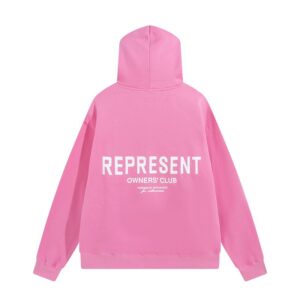Introduction
Fashion clothing has always been a reflection of the times, an ever-evolving art form that not only makes a statement about personal style but also speaks volumes about the society we live in. From the exquisite tailoring of the Victorian era to the bold and vibrant streetwear of today, the world of fashion has continuously adapted and innovated. offering a glimpse into the cultural, social, and economic dynamics of each era. In this article. We will delve into the fascinating history and evolution of fashion clothing. Exploring the various trends and influences that have shaped the industry. https://representclothings.uk/ The Ever-Evolving World of Fashion and stylish Clothing.
Historical Overview
Fashion clothing has a rich and diverse history that spans centuries, and each era has left a unique mark on the industry.
Ancient Times: From Togas to Tunics
The earliest fashion clothing can be traced back to ancient civilizations, with the Greeks and Romans setting the stage for draped garments such as togas and tunics. These garments were not only functional but also carried a sense of identity and social status, often denoting one’s rank or occupation.

Medieval and Renaissance: Opulence and Ornate Designs
The Middle Ages saw the emergence of opulent clothing, characterized by intricate embroidery, sumptuous fabrics, and elaborate accessories. The Renaissance period that followed celebrated the human form, with clothing becoming more form-fitting and tailored, reflecting a newfound interest in individualism and the arts.
The Industrial Revolution: Mass Production and the Birth of Haute Couture
The 19th century marked a significant turning point with the advent of the Industrial Revolution. Mass production led to a more accessible and affordable range of clothing. Simultaneously, the world of haute couture emerged in Paris, spearheaded by designers like Charles Frederick Worth. Haute couture introduced the concept of high-end, custom-made clothing that was the epitome of luxury and craftsmanship.
The Roaring Twenties: Flappers and Jazz
The 1920s brought forth a seismic shift in fashion, particularly for women. The flapper style became synonymous with the liberated spirit of the era. Shorter hemlines, loose-fitting dresses, and bold accessories defined the fashion of the “Roaring Twenties.” The emergence of jazz music and a more relaxed lifestyle had a profound influence on clothing, reflecting a desire for freedom and individual expression.
World War II and Utility Clothing
World War II had a profound impact on fashion. The need for practicality and resource conservation led to the creation of utility clothing. These designs were characterized by simplified silhouettes, rationing of fabrics, and a focus on functionality. Despite the constraints of war, fashion remained a symbol of resilience and adaptability.
The Swinging Sixties: Youthquake and Counterculture
The 1960s ushered in a cultural revolution that reverberated through fashion. The youthquake of this era, led by icons like Twiggy and The Beatles, brought about an explosion of color, bold patterns, and a rejection of traditional norms. Mini skirts, bell bottoms, and psychedelic prints became iconic elements of ’60s fashion. The counterculture movements, from the civil rights movement to anti-Vietnam War protests, also left an indelible mark on clothing choices, emphasizing self-expression and individuality.
Punk and Rebellion
The late 1970s and early 1980s saw the emergence of punk fashion, a movement characterized by DIY aesthetics, leather jackets, torn clothing, and heavy use of accessories like studs and safety pins. Punk was a direct response to the perceived conformity of mainstream society and music. It was about rebellion and a rejection of the status quo, and it resonated with the disaffected youth of the time.
The Power Suit of the 1980s
The 1980s were marked by power dressing, with the power suit becoming emblematic of this era. Shoulder pads, bold colors, and assertive silhouettes conveyed a sense of confidence and ambition. The corporate world heavily influenced fashion, as women increasingly entered the workforce and sought clothing that reflected their professionalism and authority.
The Minimalist 1990s and Grunge
In stark contrast to the opulence of the 1980s, the 1990s embraced minimalism. Grunge, characterized by flannel shirts, ripped jeans, and an overall “lived-in” aesthetic, represented a rejection of the materialism of the previous decade. Simplicity and comfort were at the forefront of fashion choices during this time.
The Digital Age and Fast Fashion
The 21st century has seen fashion evolve at an unprecedented pace, largely due to the influence of the internet and the rise of fast fashion. E-commerce and social media have transformed the way people shop for and consume fashion. With the ability to instantly access and share style inspiration, fashion trends can emerge and spread rapidly. Fast fashion retailers have capitalized on this by offering affordable and constantly changing clothing options, making trends accessible to a wider audience.
Sustainability and Ethical Fashion
The rapid pace of fashion has raised concerns about its environmental and ethical impact. The industry’s focus is shifting towards sustainability, with many brands adopting eco-friendly practices and materials. Ethical fashion, which promotes fair labor practices and transparent supply chains, has also gained momentum. Consumers are increasingly conscious of the impact of their clothing choices, and sustainable fashion is becoming more mainstream.
Contemporary Trends in Fashion Clothing
Gender-Fluid Fashion
In recent years, the fashion industry has seen a surge in gender-fluid or androgynous fashion. Designers are breaking down traditional gender norms by creating clothing that can be worn by people of all genders. This movement reflects a broader cultural shift towards inclusivity and acceptance.
Retro Revival
Nostalgia is a recurring theme in fashion. Designers often draw inspiration from the past, whether it’s 90s grunge, 70s boho, or 60s mod. This “retro revival” trend brings a sense of familiarity and comfort to the ever-changing world of fashion.
Sustainable and Eco-Friendly Fashion
As mentioned earlier, sustainability is a growing trend. Consumers are increasingly looking for eco-friendly materials, ethical production, and long-lasting, versatile clothing. This shift is not just a trend but a necessary step towards a more responsible fashion industry.
Tech-Infused Fashion
Technology is playing an increasingly prominent role in fashion. From smart fabrics that change color to garments embedded with wearable tech, the fusion of fashion and technology is pushing the boundaries of what clothing can do. https://markethuck.com/
Conclusion
Fashion clothing is a dynamic and ever-evolving art form that mirrors the spirit and values of its time. From the draped garments of ancient civilizations to the digital age of e-commerce and fast fashion, the industry has continuously adapted to societal, cultural, and technological shifts. As we move forward, sustainability, inclusivity, and innovation are shaping the future of fashion. It is a testament to human creativity and adaptability, reflecting the world we live in and the changes we strive for. Fashion clothing, in its many forms, will continue to be a canvas for self-expression and a lens through which we view our ever-changing world.














